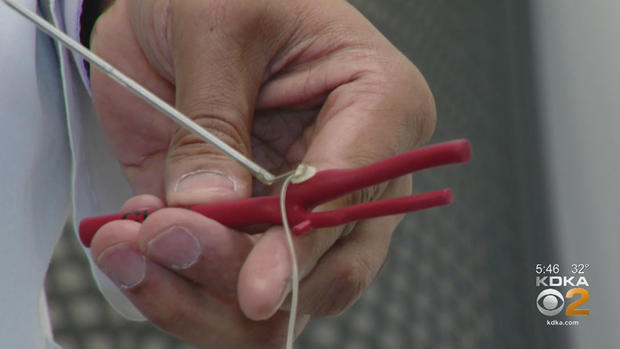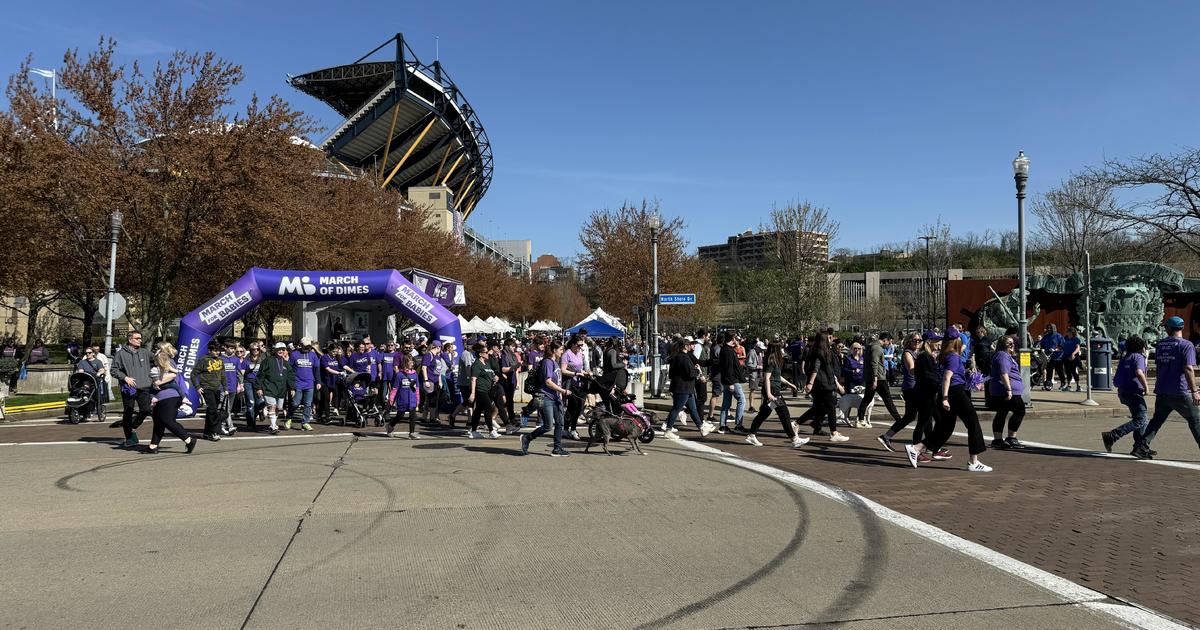Doctors Studying New Device That Helps Regulate Blood Pressure, Heart Rate
PITTSBURGH (KDKA) -- After a heart attack, Fred Fortson's heart didn't work as well as it should.
"Walking upstairs, walking a distance, and I started to get shortening of breath," Fortson said.
As part of a study, he had a new kind of stimulator put in, called Barostim.
"I'm very glad I took part in it. And I think I was first in the city," he says. "Of course, I was a little scared."
It stimulates baroreceptors, which are special sensors that detect pressure changes in blood vessels.
When you have high blood pressure or heart failure for a long time, the baroreceptors don't properly regulate blood pressure and heart rate. The idea behind barostim is to restore normal function.
"Unlike the pacemakers and defibrillators where the wires from the device go into the heart muscle, where the wires from the device go into the carotid artery," says Dr. Srinivas Murali.
The stimulator, a tiny dot, goes on the carotid artery, which is the main blood vessel in the neck. in particular, it goes on the bulgy part where the baroreceptors are located.
"When that baroreceptor is stimulated, it sends certain signals to the brain," says AHN vascular surgeon Dr. Satish Muluk.
These signals reduce how fast the heart beats, and improve the way the heart pumps.
The doctors make a small incision in the neck, place the stimulator on the carotid artery and activate it -- to find where the strongest response in blood pressure and pulse is.
"You want to see some drop in the blood pressure, which tells you you're taking some of the load off the heart," says Dr. Murali.
Once the doctors find that, they remove the placement rod, sew the tiny speck in place, and connect the wires beneath the skin into a battery pack… surgically implanted into a pouch in the upper chest.
"How much adjustment, fine-tuning is necessary over time is something we need to figure out," Dr. Murali admits.
The device was FDA approved a few months ago for people with heart failure symptoms, like trouble breathing and walking, and leg swelling. Those patients' hearts also must pump poorly, and they can't have certain abnormal heart rhythms.
"How easily it's going to be available for all patients is yet to be determined," Dr. Murali adds.
Even with the device, patients still have to stay on their medicines.
"It's an addition, to all of the other things that we do for heart failure," says Dr. Muluk.
They don't feel the electrical impulses, they only notice they're able to function better.
"You know I'm walking now. I don't have shortness of breath as quick as I did then. Although, I still have it," says Fred. "I think I'm just living a little better now, since I had it in."
Overall, Fred says he's grateful for how he's improved since getting Barostim.




